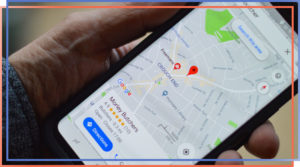How to Check for a Tracker on Your Car
The thought of someone tracking your car with a hidden device can be a disturbing thought. Whilst this is something that many of us don’t t have to worry about, in some situations this could be a bitter reality. If you suspect your car is being tracked, fear not. With expert guidance on how to check for a tracker on your car, such a device can be easily located and disabled.
What is a GPS tracker?
Tracking devices are small gadgets that rely on the global position system (GPS) and cellular networks in order to trace locations. These trackers are often placed on cars or other vehicles to track location in log format or real-time.
Most tracking devices are small enough to go unnoticed to an untrained eye. Tracking devices are often about the same size as a pack of cards and therefore can be discretely tucked away in any vehicle.
GPS tracking devices often have beneficial and legitimate uses, such as fleet tracking, theft recovery and helping you find where you parked. Tracking devices are only a cause for concern if you suspect someone has installed a tracker on your car without your permission.
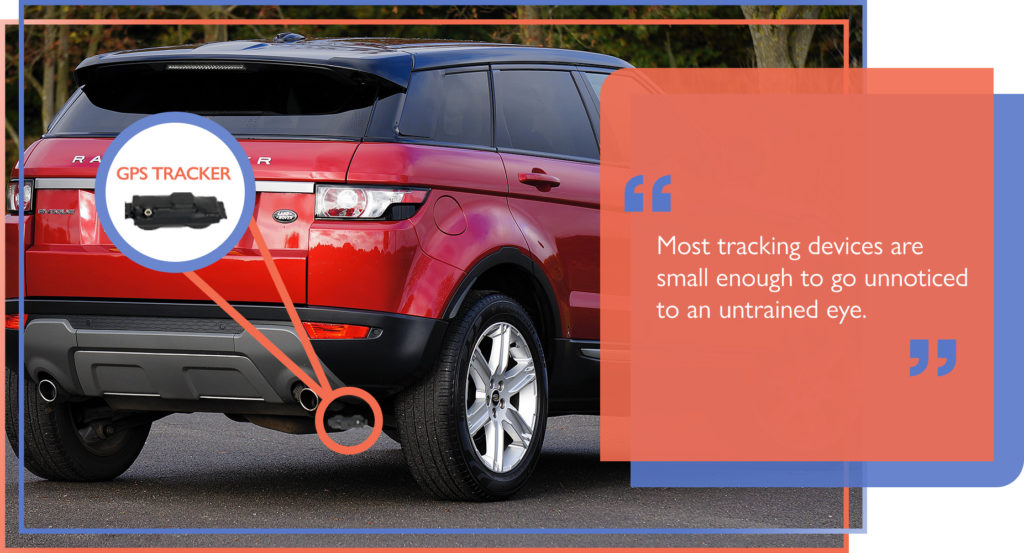
How does GPS tracking on cars work?
GPS trackers are often discretely attached to a vehicle, with the tracker automatically activated when the vehicle is set in motion. The technology behind GPS trackers relies on a complex mathematical equation called trilateration in order to determine a device’s precise location.
Vehicle trackers work differently depending on whether it’s an active or a passive tracker. If the tracker is active, it will deliver a real-time account of the vehicle’s location to anywhere in the world.
If the tracker is passive, it will log location data and store it all on a hard drive. However, the information can only be accessed when the device is connected to a computer. In other words, it doesn’t provide real-time updates, but rather stores location data which you can review at a later date.
Where could a GPS tracker be hidden on a vehicle?
Tracking devices can be hidden in the interior or the exterior of your vehicle. If you suspect that your vehicle is being tracked, you can carry out a manual inspection. For this, you will need a torch and an inspection mirror.
Exterior Inspection
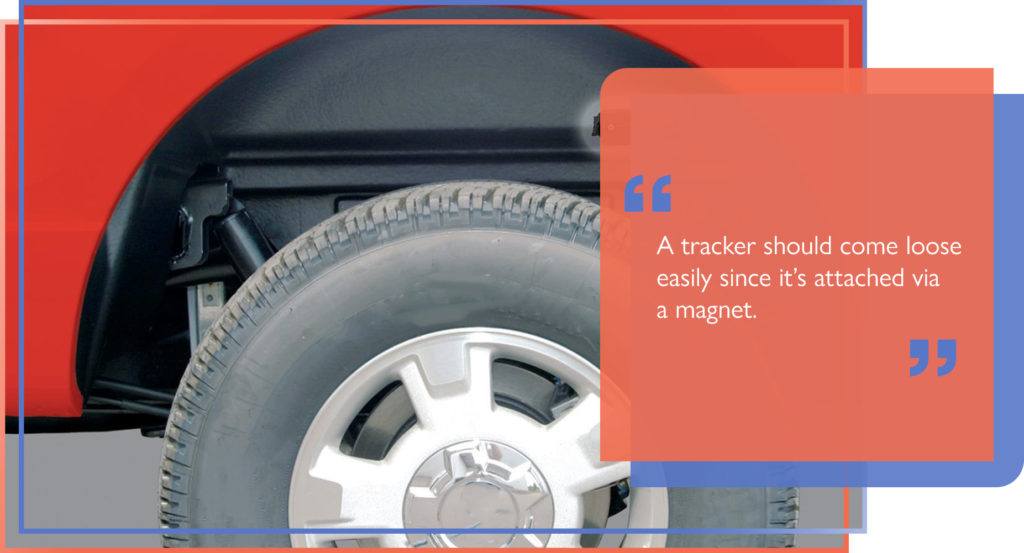
- Using your torch, check both the front and rear wheel wells. If nothing is visible, use your hands to feel around the wheel well. The tracker will be attached with a magnet, so check all the metal parts which could be hosting the device.
- Using your inspection mirror, check the underneath of your vehicle. The tracker will likely be placed on the perimeter of the car, in an easy to reach location. However, if you’d like to be extra vigilant, use a car creeper to slide under the vehicle.
TIP: Be aware that the tracker will likely be very dirty if on the underneath of your car and may be hard to distinguish. If you see something that looks out of place, give it a light tug. A tracker should come loose easily since it’s attached via a magnet. - Front and rear bumpers are a common place to hide GPS trackers. Check behind both to see if there’s space for a tracker to be slipped in.
- Lastly, have a look under your bonnet. Although this is an unlikely location for a tracker, since the front of the car gets very hot, there is no harm in being vigilant.
Interior Inspection
- Have a look in the boot of your car, feeling all around the edges. It may also be worth removing the spare tyre and checking the well.
- Have a look within the seat cushions and headrests, especially if your seat covers unzip or can be removed.
- Use your torch to check beneath the seats and the carpet. Compare the two seats to see if there’s anything that looks out of place.
- Some tracking devices plug straight into the data port. Have a look for a small black box plugged in underneath the driver’s side of the dashboard.
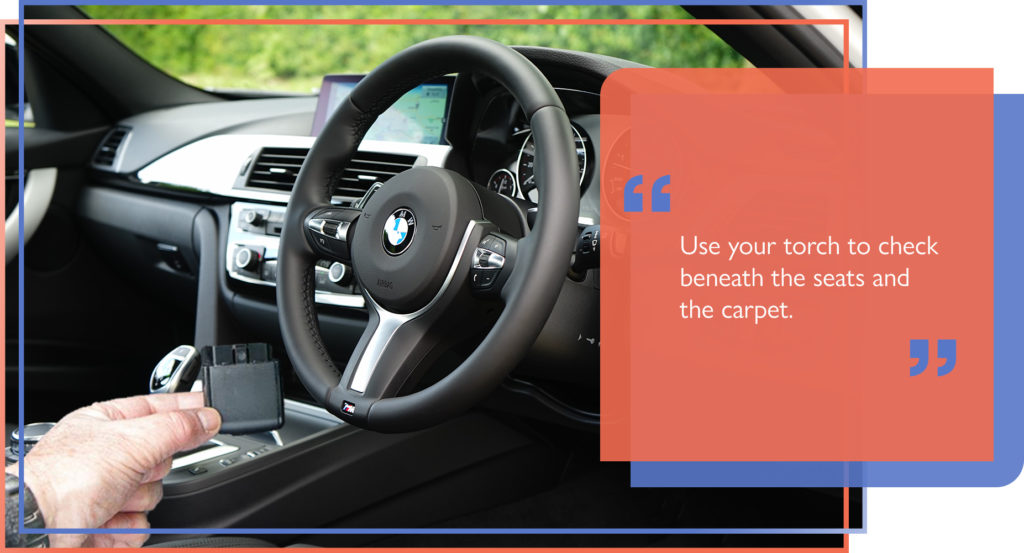
Using counter-surveillance equipment to locate the tracker
If you can’t find a tracker on your car through a manual inspection, you can try an electronic sweeper device (otherwise known as a bug detector). An electronic sweeper is a type of counter-surveillance equipment that can detect modern, covert trackers.
The bug detector works by checking for the presence of a radio-frequency transmission or a cellular-signal transmission. If a tracking device is found, the sweeper device will alert you to its presence by beeping, vibrating or flashing.
In order to use your bug detector, turn it on and walk slowly around your vehicle. Place it near to the body of the car, paying attention to areas you suspect it may be hidden. The device will alert you if there is a radio frequency signal nearby by bleeping, vibrating or flashing more violently.
Be aware that some GPS tracking devices only operate when the vehicle is moving. You should ask a friend to drive your car for you while you operate the electronic sweeper device.
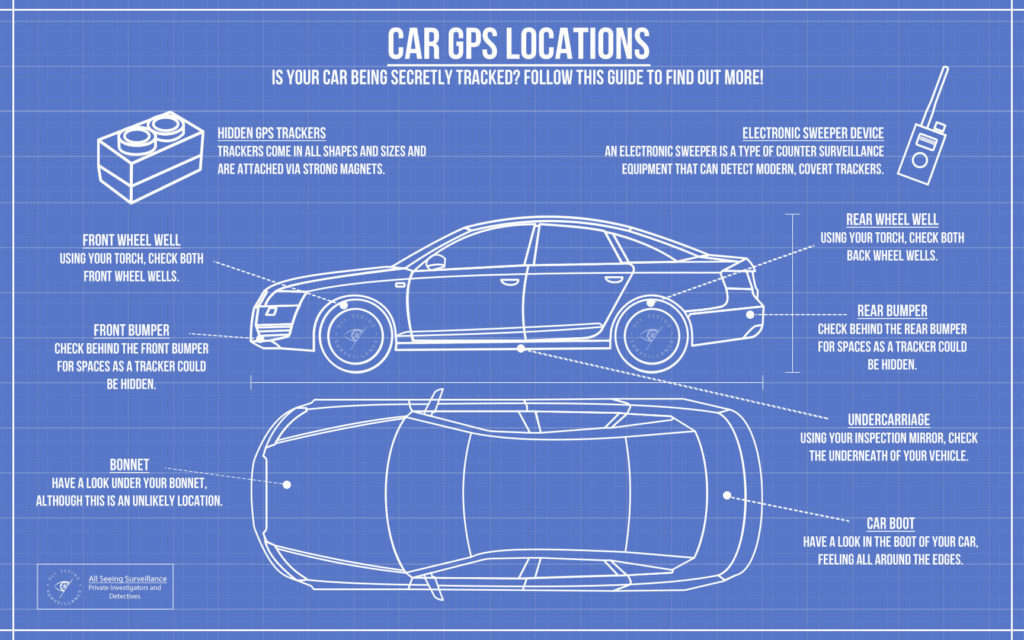
Utilize our services
If you’re still suspicious, hire a private investigator to help you. Private investigators are specially trained and have a better understanding of where these devices could be hidden. At Trojan Surveillance, we can do the work for you.
If you’d like to try out a GPS tracker for yourself, All Seeing Surveillance offer GPS vehicle trackers to purchase for a one-off fee. Our trackers can be implemented into a fleet or a single vehicle to allow you to track location, speed and other relevant data.
For more information on our services or GPS vehicle trackers hire, please do not hesitate to get in touch.

